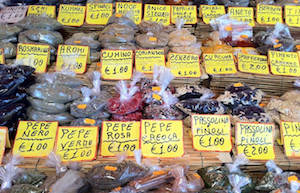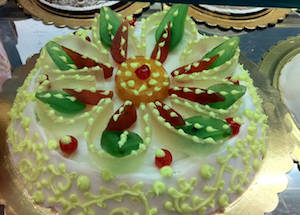Going Beyond the Three F’s
On April 19th, 2011, New York Times reporter, William K. Rashbaum covered the trial of Joseph C. Massino by focusing on the ways in which Italian Americans have always associated the culinary arts with organized crime. The article encourages blatant stereotypes. He writes, “References to food, meals, cooking and the restaurant and catering businesses, along with some choice gastronomic metaphors, have kept coming like so many courses on a tasting menu. They appeared at times to pile higher and higher, as if a groaning board had replaced the prosecution and defense tables in the well of the courtroom.”
Aside from the fact that both food and organized crime were mentioned in the same trial, there is no reason to immediately connect the two. Rashbaum’s approach is instead, proof that Italian American stereotypes are very much alive in our society and practiced carelessly. This alone should be disturbing to all Italian Americans. Many concerned with this issue have devoted time and energy to explaining the origin, evolution, and danger of such stereotypes.
This past week, on Thursday April 28 to Saturday 30, The John D. Calandra Institute held its fourth annual conference dedicated to the education of the Italian American Experience, this year titled, “The Three F’’s in Italian Cultures: Critical Approaches to Food, Fashion, and Film.” Dean Anthony Tamburri invited his guests to consider, during each lecture or presentation, how these issues which were seemingly lighthearted and fun, have much more serious undertones and implications for the Italian American community.
To quote the Cardinal of Napoli, Crescenzio Sepe, who visited New York earlier this year, Tamburri says, “We have to look at the splendor and we also have to look at the darkness, we have to look at both.” In this way, the symbolism behind the title of this year’s conference is twofold; it represents all of the ways that the world has benefitted from Italian food, film, and fashion. At the same time, it makes reference to the ways in which Italian Americans and Americans alike have allowed such elements to become negative icons of Italian culture and its people.
Food is a primary icon with both positive and negative connotations. Throughout the conference, various scholars presented their research and personal experiences regarding the topic of food and its inherent stereotypes.
The conference started with John Mariani, Esquire’s Food and Travel Correspondent. In a presentation of his most recent book, How Italian Food Conquered the World, Mariani provided a conclusive timeline to show the evolution of Italian recipes and development of whatever we define as “Italian food.” It is important to note, Mariani said, that there is a great difference between the way that Americans wanted to define Italian cuisine and culture and what is actually practiced by native Italians.
It was cute to associate all Italian Americans with images of rotund women dishing spoonfuls of red stained spaghetti and meatballs into their mustached, rosy-cheeked, husband’s bowl, but in Italy, spaghetti and meatballs is strictly an American dish and the husband and wife, practicing the “Mediterranean Diet” are slender and healthy. Needless to say, the image that America wanted to paint of these men and women is far from the truth. In America, it was named “Italian Food,” in Italy, there were twenty regions with separate practices and specialties.
Mariani, though hopeful that the general public is becoming better informed about the truths of Italian culture, mentions that we still have work to do. “Food is a window into any culture,” he says, but when successful Italian restaurants must “be connected” or The Soprano’s “Last Supper” dinner scene is assumed to represent every Italian American household dynamic, Italian Americans must speak up. It cannot be regarded as humor. In his ongoing research of the relationship between Italian cuisine and culture, Mariani hopes to break down these barriers of ignorance and misunderstanding.
The conversation continued on Friday with speakers such as Joseph Cosco, Olivier de Maret, Simone Cinotto, Marie-Christine Michaud, and Alessandra Coccopalmeri. Cosco, of Old Dominion University, analyzed Jacob Riis’s photographic representation of the Italian immigrants, demonstrating the ways in which Italian Americans and their culinary traditions were misreported and assigned strong negative connotations. Their cuisine was described as, “frowsy weeds, odd-looking creatures, and big awkward sausages;” a phrase implying that Italian immigrants were barbarians with unsafe eating habits.
Simone Cinotto, of the University of Gastronomic Sciences expanded on the issue to announce that cookbooks and Italian recipes were in fact more about the people’s methods for documenting history than about the food itself. In his presentation titled, “Consuming the Culinary Other: Italian Writers and the Transnational Formation of Taste in Postindustrial America,” Cinotto explains how cookbooks are more than recipes, just as Italians are more than food, film, and fashion.
As with any ethnic stereotype, education and patience are necessary factors in eliminating destructive labels. The John D. Calandra Institute’s annual conference, as the room was filled for nearly every session across the three days, is a proud contributor to these efforts in education. If change is going to come from anywhere, it will start with those of Italian heritage, educating and critiquing their own ancestral evolution.







































i-Italy
Facebook
Google+
This work may not be reproduced, in whole or in part, without prior written permission.
Questo lavoro non può essere riprodotto, in tutto o in parte, senza permesso scritto.